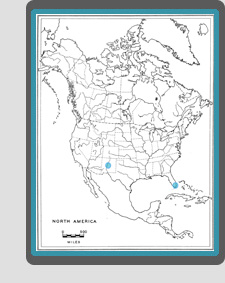
 General & Distribution
General & Distribution
Craspedochaeta concinna is one of the most widespread and commonly-encountered species of Clusiidae in the New World tropics, although records from the Amazon Basin are comparatively few (possibly a collecting artifact). In North America, this species is known from only two records in Florida and New Mexico.
Like Craspedochaeta annulipes, C. concinna has two colour forms, but unlike C. annulipes, the two forms are almost entirely restricted to one sex or the other. The larger dark form is almost always found in the female, while the much smaller pale form is most often found in the male. Pale form specimens differ from the darker ones as follows: the bristles are yellow (not black); the legs are white (not brown) with the ends of the tibiae brownish; and much of the head below the antenna is white (not brown) with the sides more extensively covered with reflective hairs.
Similar species
 Craspedochaeta concinna can be distinguished from other New World Craspedochaeta by its characteristically dusky wings. All Nearctic congeners (and almost all other Neotropical ones as well) have an isolated anterodistal cloud on the wing, or a clear medial band.
Craspedochaeta concinna can be distinguished from other New World Craspedochaeta by its characteristically dusky wings. All Nearctic congeners (and almost all other Neotropical ones as well) have an isolated anterodistal cloud on the wing, or a clear medial band.
Biology
Craspedochaeta concinna regularly occurs in Malaise and pan traps, and there are also collection records from compost, a pitfall trap baited with fish, and dung. One pair was photographed copulating at a dung bait (see below).

















 General & Distribution
General & Distribution